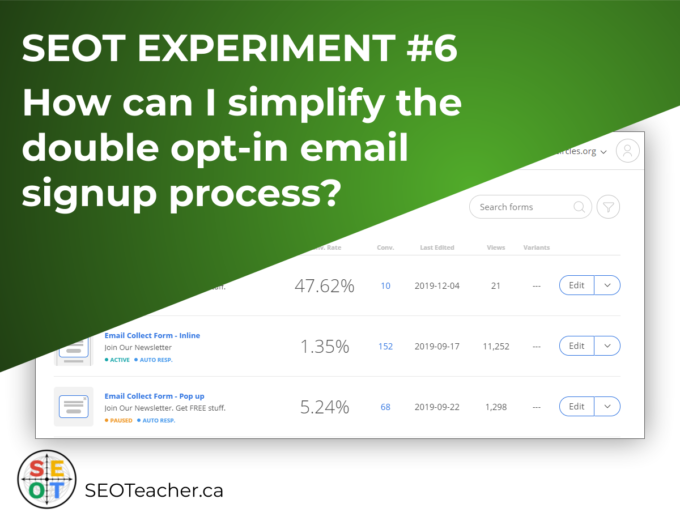Experiment #6: How can I simplify my workflow to build an email mailing list and to send emails to followers

I think a key aspect of improving is to keep track of how you’re doing and then try different things to see if you can improve (optimize) those numbers.
Apparently collecting email addresses is an important thing for new websites. If you sell on a third party marketplace (like Teachers Pay Teachers, Fiverr, Udemy), you don’t have access to your customer emails.
But, if you collect your customer emails when they visit your website, then you can communicate with them directly.
I didn’t use to collect email addresses until a buddy of mine who also makes money from the internet told me about Sumo. Wow, this sentence sounds spammy, but it is what it is. (He’s also the one that told me about Monster Insights for Google Analytics, and that plugin is a gem – even the free version.)
We meet at Starbucks for a weekly brainstorm and check-in. I liked the way his website had a pop-up window asking for you to sign up for email.
So, I started using Sumo and had to decide between double-opt in or single-opt in :
If you were using single opt-in, the double opt-in supporters would say your list was full of fake accounts that obviously wouldn’t open your email. They didn’t have to confirm their subscription, so they might’ve used a fake account to get something from your site.
FYI: By default, you’re probably using single opt-in when you collect email addresses.
If you were using double opt-in, the single opt-in supporters would say you could’ve had more opens if your list was bigger. But by making readers open an email to confirm their subscription, you lost a large percentage of email addresses to communicate with because they didn’t open that confirmation email.
Sumo.com double-opt in emails
I don’t think Sumo offers double-opt in unless you’ve matched it with another system like mailchimp. So, up to now, I’ve been manually going in and selecting email addresses that both open the auto responder email and clicks a link and I put these emails (manually) into my double-opt in mailing list.
It’s fine for now, but I’d like to automate it so I can scale things up. Perhaps its time to check out MailChimp again.
(Also, I find the formatting in Sumo mail messages to be a little bit wonky – maybe Mailchimp does it better?)
The Experiment
This week, my goal is to use Sumo to handle the pop-up windows on my website and collect email addresses, but…
Use mailchimp (or something else) to
- confirm that the email address is legit (double-opt in)
- send out my next email message to my peeps.
- tell me where my email subscribers came from? (Facebook? Google organic search? Google Paid search? So many option!)
Up til now, Sumo has been showing me pretty numbers about which email campaigns have been successful(er):
Questions I have
- Since I am now starting to translate my lessons into other languages, does that muddy-up my mailing list? Are people signing up for English lessons, or lessons in another language?
- How can I keep track of when paid visitors sign up for the email newsletter. Maybe some people click on a Google Ad and Facebook Ads and won’t make a purchase right away, but maybe later on, something will catch their eye, and they’ll click on a link in the email newsletter…
Sumo vs Mailchimp
A quick google search helped me find this article comparing Sumo and Mailchimp.
The article says that Sumo offers Mailchimp integration but you have to buy a paid plan, but that’s no longer correct. I was able to integrate a free Sumo account with a free Mailchimp account.
Sumo offers MailChimp list integration, but you have to be using one of their paid options (starting at $29 per month) to get that feature. If the other capabilities of premium Sumo packages are worthwhile for your blog, this is the way to go. But $29 just for the email integration may not make sense.
Webbiquity
Found this Sumo Support article about integrating with MailChimp…
The Results
I set up


